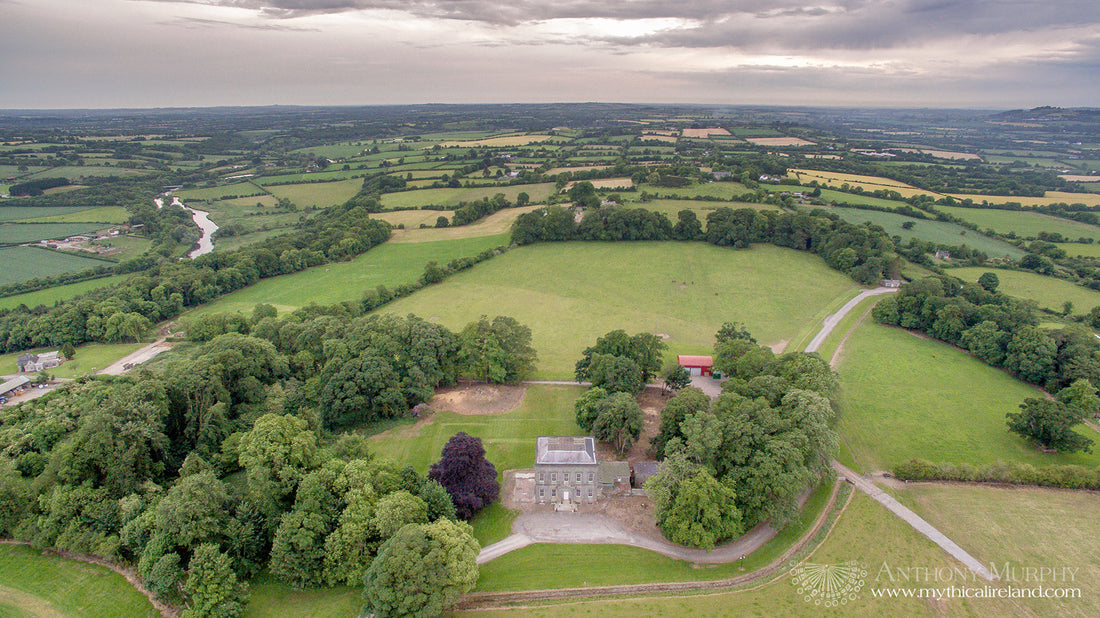
Dowth Hall: When there are two passage-tombs in your back garden, maybe your house is built on one!
An odd title for a blog post, right? Bear with me and I will explain.
Dowth Hall is a mid 18th century Georgian House built by the 5th and 6th Viscounts Netterville. The Nettervilles were an Anglo-Norman family who had settled here in the early 13th century. After the passing of the 6th Viscount, who had no heirs, the property and all its lands came into the ownership of a wealthy English Catholic, Richard Gradwell. The Gradwells owned Dowth Hall until the 1950s. Since then, it has passed through the hands of several owners, the latest being Devenish Nutrition, whose Executive Chairman Owen Brennan and his wife, Professor Alice Stanton, planned to renovate the house and live in it.

Dowth Hall was built by the Nettervilles in the mid 1700s.
Because it is situated in the Unesco World Heritage Site of Brú na Bóinne, plans for a sunken garden around the old house necessitated archaeological monitoring and excavations. During those excavations, the remains of a Neolithic passage-tomb were found UNDER THE HOUSE.
Excavations were headed by Clíodhna Ní Lionáin of University College Dublin (UCD). The main image above shows Dowth Hall in June 2017 - just two months before excavations began.

Significant prehistoric remains were uncovered around the Hall on its southern and western sides. Several kerb stones were found, some containining megalithic art, and the remains of a cairn, whose stones included a certain amount of water-rolled white quartz stones (those at Newgrange were angular). Two chambers were found, one of which was excavated while the other awaits future excavation.
The discovery of the passage-tomb at Dowth Hall was announced in July of 2018, less than a week after the discovery of Dronehenge at Newgrange Farm. It really was a remarkable week at Brú na Bóinne.

Dowth Hall and its passage-tomb in 2023.
Long before the excavations and the discovery of a tomb beneath Dowth Hall, there were indications of Neolithic activity in the vicinity of the house. In 2014, a large stone (which might have been a kerb stone, measuring about 1.5m in length) with two spiral motifs of passage-tomb art was found in the ha-ha just east of Dowth Hall.

Megalithic art on a stone found at Dowth Hall.

A close-up of one of the spirals on the stone found in 2014.
Long before the era of Devenish at Dowth Hall, there was already considerable Neolithic archaeology on the estate. The well-known Dowth Henge (Site Q) is located just 350 metres northeast of Dowth Hall house. This giant late Neolithic embanked enclosure has a summer solstice sunrise alignment, first confirmed by observations made at that henge in 2000 by Richard Moore and I.

The great henge (Site Q) on the lands at Dowth Hall.
In the back garden of Dowth Hall, very close to the house, are TWO passage-tombs, labelled Sites I and J on the old maps of the monuments of Brú na Bóinne. Both of these mounds are around 20 metres in diameter, but possibly larger. At some point in recent history, Mound J had its capstone moved off the top, revealing an as-yet unexcavated chamber below.

Passage-tomb J at Dowth Hall with its capstone removed.
Below is an aerial image I took in June of 2017 showing Dowth Hall house and its garden. This was taken just two months before excavations began in the garden of the house - excavations that would reveal the passage-tomb upon which it was built. You may notice that the house was built on an elevated rectangular platform, which was found to have old servants' tunnels underneath.

An aerial view of Dowth Hall and its back garden passage-tombs, I & J.
Below is an annotated version of this photo, showing the locations of the two previously known passage-tombs, I and J, and the approximate location of the newly discovered passage-tomb, excavated in 2017-2018.

The location of the three passage-tombs of Dowth Hall.
This is part of the story of Dowth Hall that tends to be overlooked in publicity about the archaeology there, and the discovery of the passage-tomb announced in the summer of 2018. Given the proximity to the house of two known and documented passage-tombs (Sites I & J), and the fact that a stone bearing megalithic art had been found not far from the house in 2014, we shouldn't have been all that shocked with the revelation that the house itself had been built on a Neolithic cairn.

Mound J at Dowth Hall photographed on winter solstice 2016.
Most of the surprise or shock seems to be of the "how could they do such a thing?" variety - i.e. how could someone half-destroy a precious prehistoric monument to build a house. And the answer is simple - in the 18th century, an Anglo-Norman family who had been here for five centuries would have given little concern to ancient antiquities.
The irony is that they vandalised two ancient passages/chambers in order to build a different type of tunnel - servants' tunnels - which run under the house. I suppose we can be grateful that the Nettervilles didn't completely destroy the monument, and that significant enough portions of it remain so that we can begin to unravel its story.

A servants' tunnel built out of passage-tomb stones.
The Dowth Hall passage-tomb was hidden from the view of LiDAR and satellite photos, concealed in that raised rectangular platform beneath the house. Archaeologists would only have been able to guess at the possibility of its existence.
Thankfully, because Dowth Hall has now passed into State ownership, to become part of Ireland's seventh and newest national park, this monument and indeed all the other ancient monuments on the old estate will hopefully become accessible to the visiting public in the coming years.

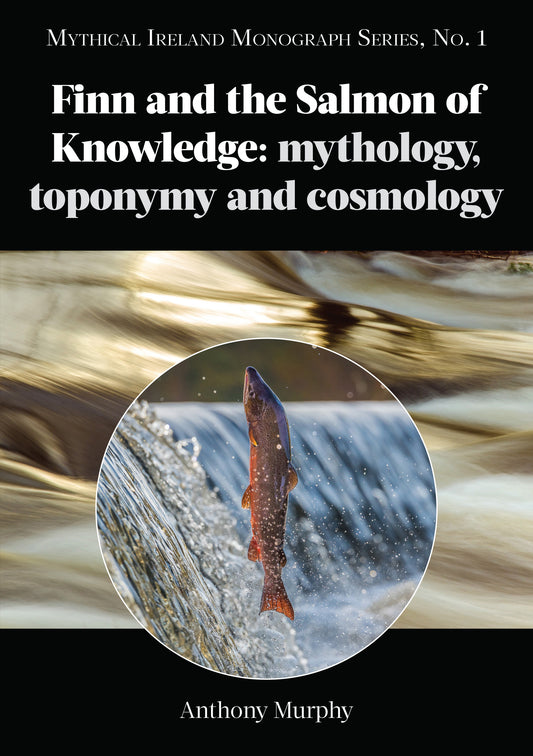
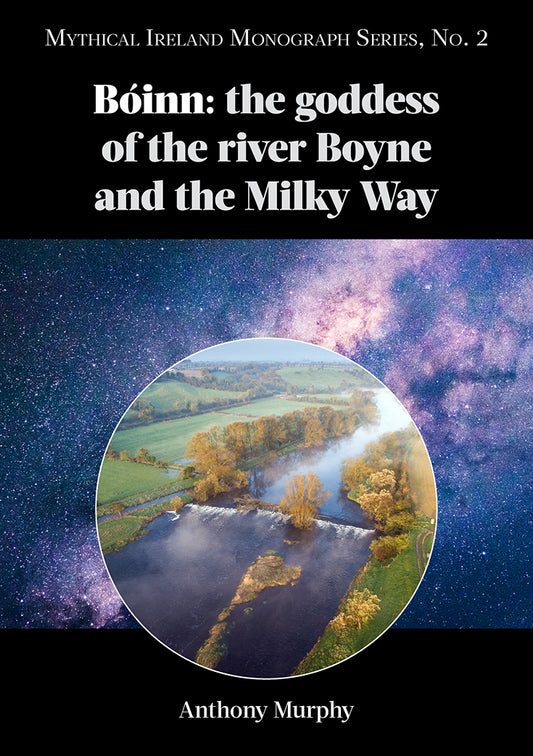
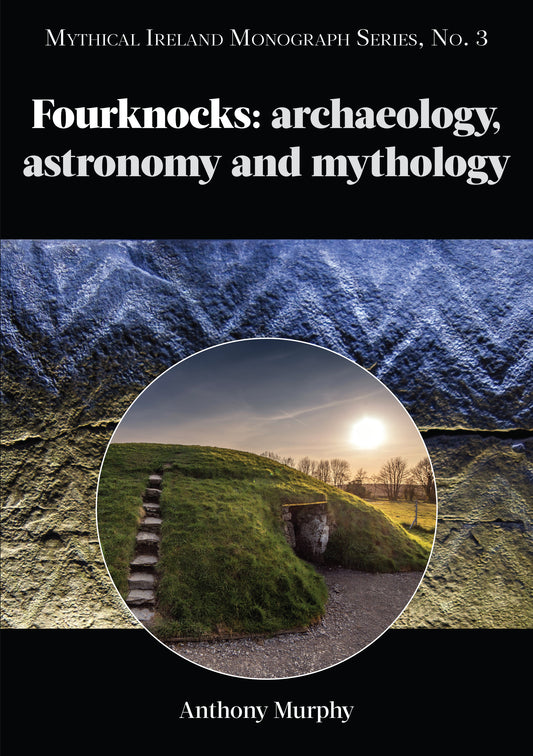
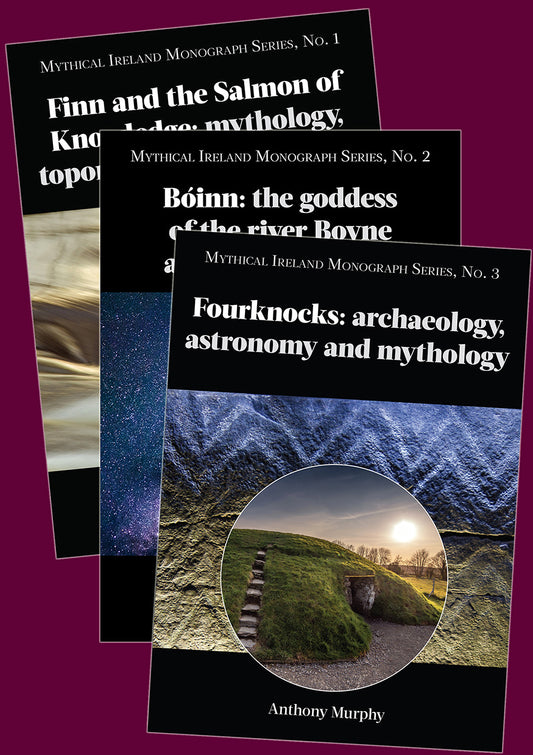
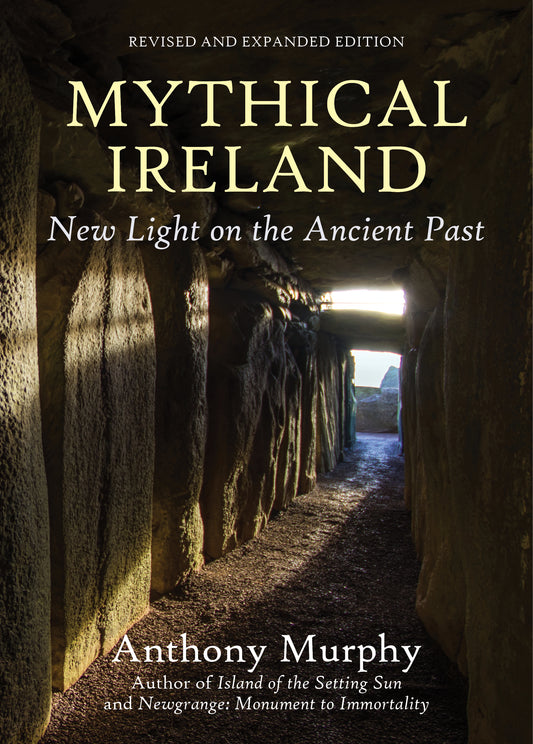
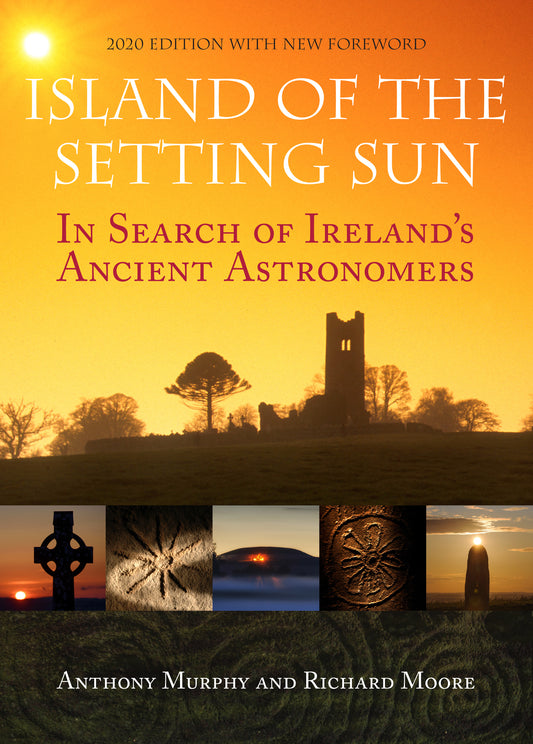
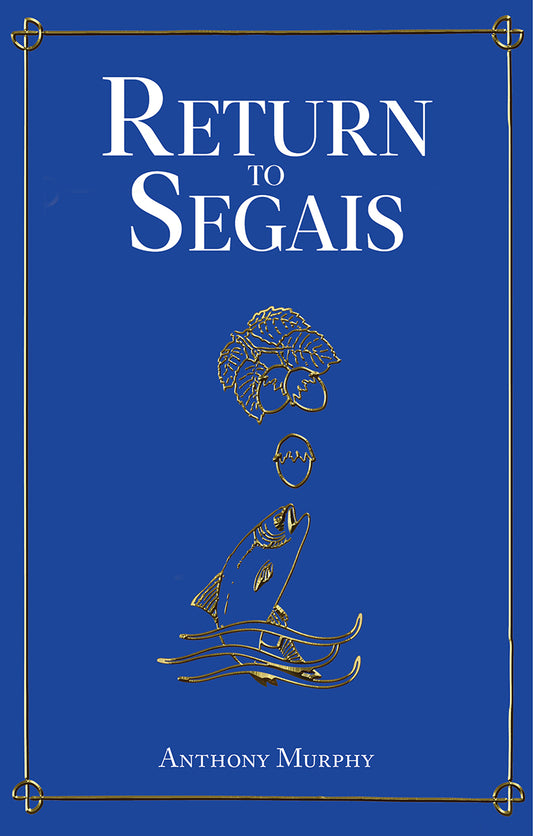
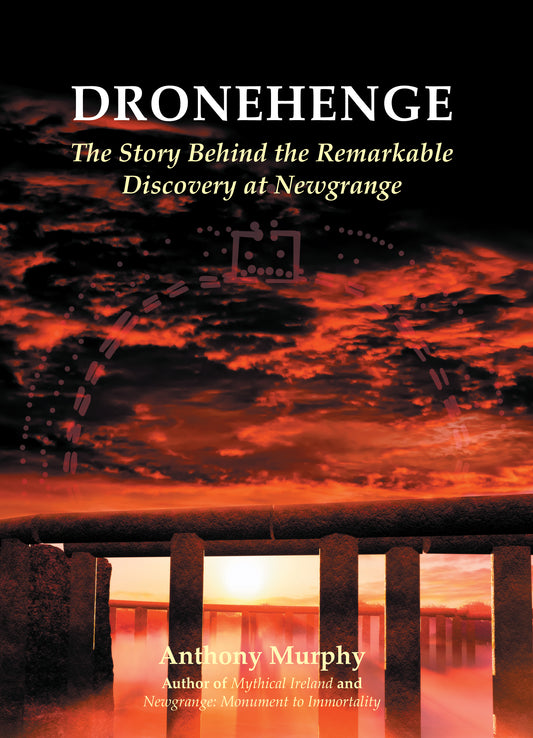
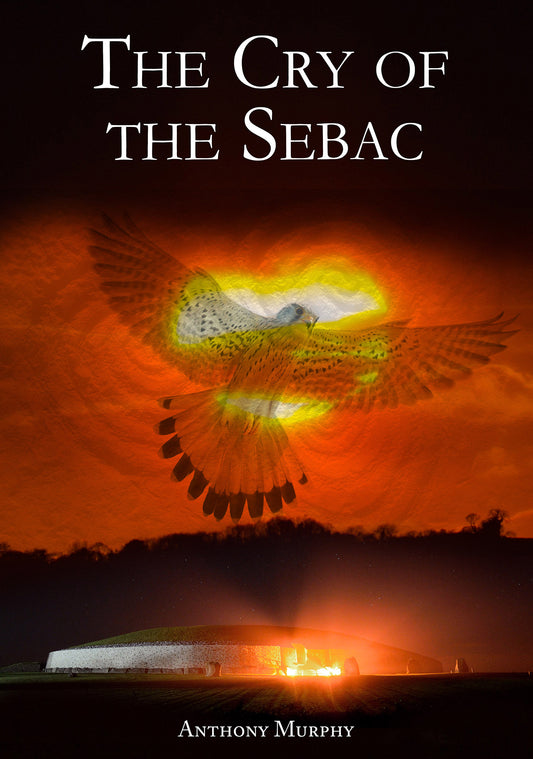
4 comments
I was a guest of Owen Brennans and I observed the work he organized and accomplished at Dowth Hall. His love of the land, preservation of such aand the History of Ireland were second to none. He had a vision, to live in the lovely house at Dowth Hall. Sadly, he never did..
d
I am a Netterville and it was, in fact, Netterville Manor.
Hi Lexi, Martin Brennan did not live in Dowth Hall. He lived in Netterville Manor! Also, while I’m not defending what happened to the passage-tomb, you have to remember that in the mid 1700s, Anglo-Norman families wouldn’t have cared much for ancient Irish monuments!
It truly is amazing how an ancient site was allowed to be “vandalised” in such a manner. Surely the building of the house could have been moved once the antiquity of the site had been recognised . Of course, this is more of a modern day concept, but perhaps a wee bit more of excavation work could still be carefully done. Would it reveal any new information? Interesting that Martin had lived there at one time. That could have easily influenced him.